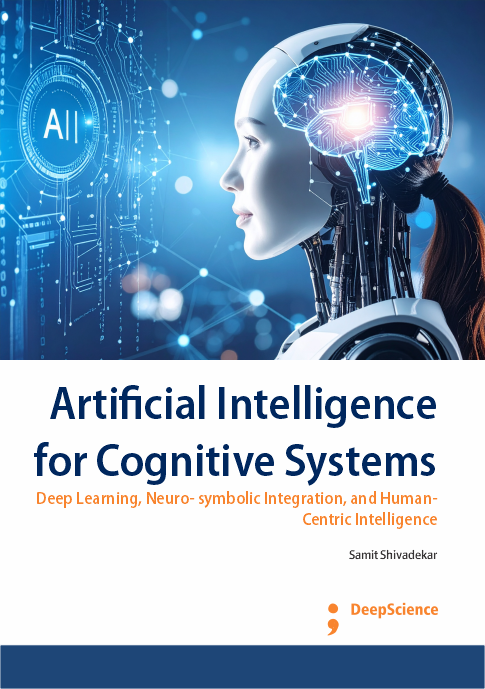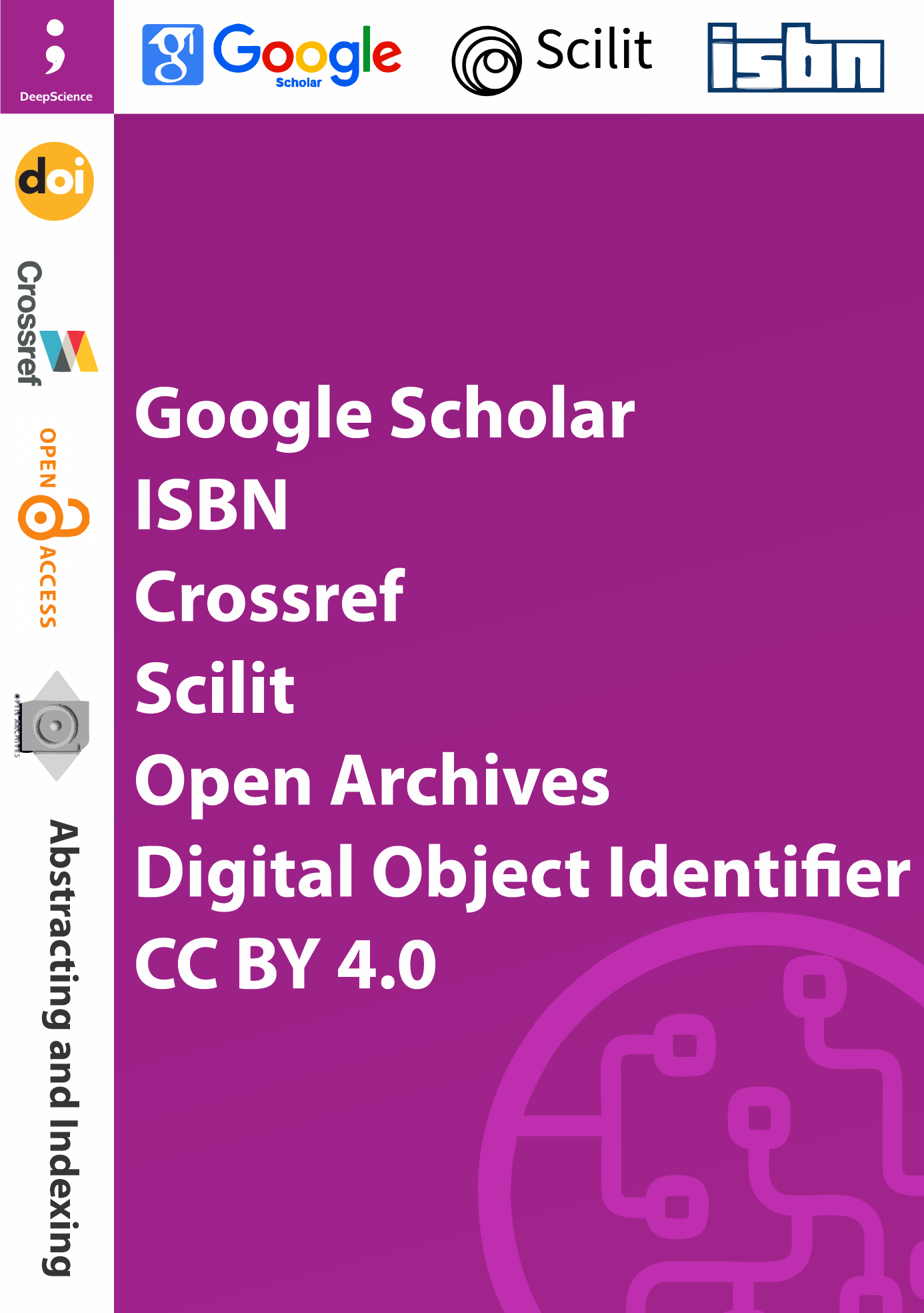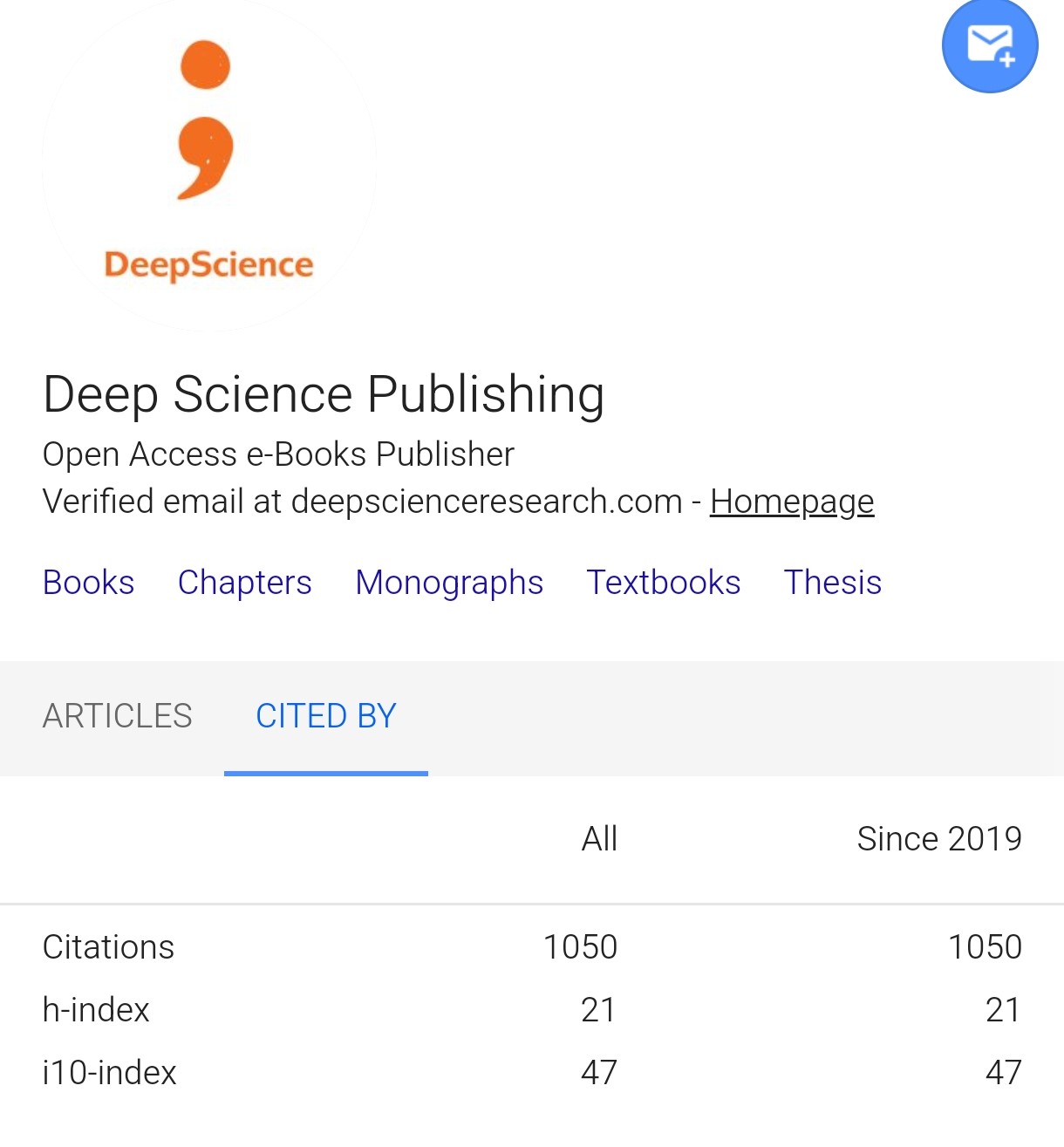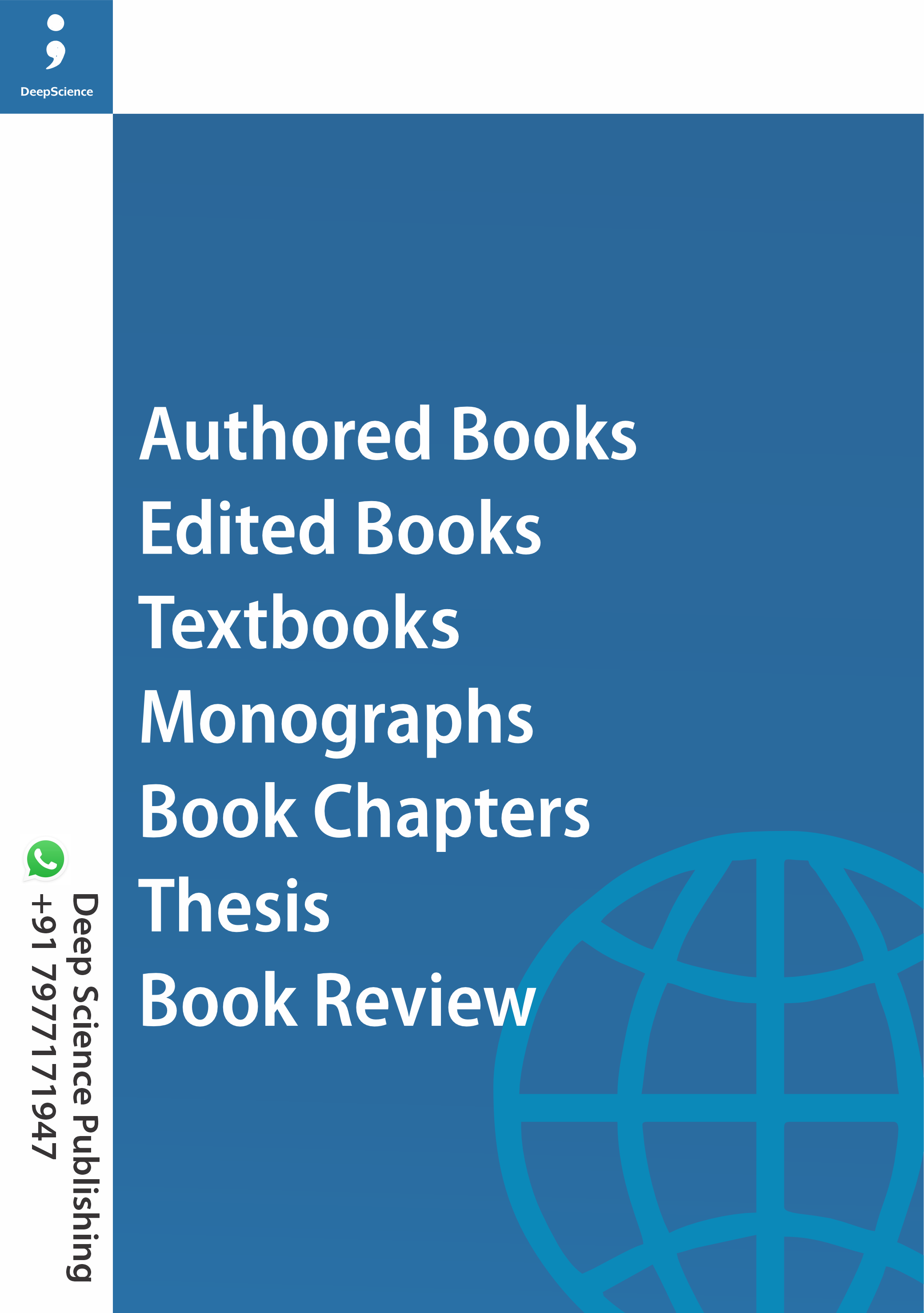Artificial Intelligence for Cognitive Systems: Deep Learning, Neuro- symbolic Integration, and Human-Centric Intelligence
Keywords:
Cognitive Artificial Intelligence, Artificial General Intelligence, Deep Learning, Neurosymbolic Integration, Cognitive Architectures, Explainable AI, Natural Language ProcessingSynopsis
Artificial intelligence quickly changed from a theory to a practical power - it spreads through every part of modern life. As people go from specific uses to more general kinds of intelligence, they must face a main change. This change involves what machines do and how people think about intelligence. The book, Cognitive AI - From Deep Learning to Artificial General Intelligence, looks at that change.
This writing serves a wide, serious group of people - it is for graduate students and researchers in artificial intelligence and cognitive science. Educators along with industry workers also read this to get a better grasp of the path from current AI systems to future cognitive architectures. We do not just list technologies. We deal with the concepts, morals, technical issues as well as societal problems that sit at the core of creating machines that think.
The chapters lay out this story bit by bit; they start with basic learning systems. They move to cognitive modeling and designs. The book finishes with important questions about governance, combining fields along with how people will work in the future. Throughout the text, the reader learns about current subjects. Some of these are large language models, explaining how systems work, reasoning with symbols plus networks, the safety of general artificial intelligence, and people working with machines.
I appreciate the researchers, collaborators along with students who inspired this work. The growing group of thinkers also recognizes that making intelligent systems requires scientific exactness and philosophical thought. My hope is that this book guides plus starts talks for anyone who wants AI to develop responsibly and creatively.
References
Anderson, J. R. (2007). How can the human mind occur in the physical universe? Oxford University Press.
Boden, M. A. (2016). AI: Its nature and future. Oxford University Press.
Cath, C. (2023). Artificial intelligence and ethics. Polity Press.
Daugherty, P. R., & Wilson, H. J. (2018). Human + machine: Reimagining work in the age of AI. Harvard Business Review Press.
Dehaene, S. (2020). How we learn: Why brains learn better than any machine... for now. Penguin Random House.
Eisenstein, J. (2022). Natural language processing. MIT Press.
Frankish, K., & Ramsey, W. M. (Eds.). (2023). The Cambridge handbook of computational cognitive sciences. Cambridge University Press.
Gazzaniga, M. S., Ivry, R. B., & Mangun, G. R. (2018). Cognitive neuroscience: The biology of the mind (5th ed.). W. W. Norton & Co.
Grossberg, S. (2021). Conscious mind, resonant brain: How each brain makes a mind. Oxford University Press.
Herrmann, D. J. L., & Frankland, M. J. (2022). Memory systems in artificial intelligence: Bridging cognitive science and machine learning. MIT Press.
Hitzler, P., Krötzsch, M., & Rudolph, S. (2022). Foundations of semantic web technologies (2nd ed.). CRC Press.
Horvitz, E., & Russell, S. (2022). The future of AI: Opportunities and challenges. Cambridge University Press.
Inaba, M., & Inoue, H. (2023). Cognitive robotics: Concepts and applications (2nd ed.). MIT Press.
Kahneman, D., Sibony, O., & Sunstein, C. R. (2021). Noise: A flaw in human judgment. Little, Brown Spark.
Langley, P. (2022). Cognitive architectures. MIT Press.
Linden, D. J. (2023). The accidental mind: How brain evolution has given us love, memory, dreams, and God. Belknap Press of Harvard University Press.
Marcus, G., & Davis, E. (2019). Rebooting AI: Building artificial intelligence we can trust. Knopf.
Murphy, K. P. (2022). Probabilistic machine learning: An introduction. MIT Press.
Panda, S. P. (2025). Artificial intelligence across borders: Transforming industries through intelligent innovation. Deep Science Publishing.
Parsons, T. D. (2021). Affective computing and artificial intelligence: Tools, advances and implications. Cambridge University Press.
Russell, S., & Norvig, P. (2020). Artificial intelligence: A modern approach (4th ed.). Pearson.
Sejnowski, T. J. (2018). The deep learning revolution. MIT Press.
Shneiderman, B. (2022). Human-centered AI: Designing for the age of artificial intelligence. Oxford University Press.
Szeliski, R. (2022). Computer vision: Algorithms and applications (2nd ed.). Springer.
Zaslavsky, A., Perera, C., & Georgakopoulos, D. (2022). Sensing as a service for internet of things: Big data analytics and cognitive computing. Springer.
Andreas, J. (2023). Language, logic, and learning: Integrating symbolic and neural approaches. MIT Press.
Bahdanau, D., Cho, K., & Bengio, Y. (2024). Neural attention mechanisms: Foundations and applications. MIT Press.
Bengio, Y. (2024). Deep learning for AI. MIT Press. (Forthcoming, early release online).
Besold, R., d’Avila Garcez, A., & Lamb, L. (2023). Neural-symbolic cognitive reasoning. Springer.
Brown, T., Raffel, C., & Vaswani, A. (2023). Advances in transformer architectures: From attention to memory. Addison-Wesley.
Choi, Y., & Sap, A. (Eds.). (2023). Commonsense machine learning. MIT Press.
Chollet, F. (2021). Deep learning with Python (2nd ed.). Manning.
Devlin, J., et al. (2022). BERT: Pre-training of deep bidirectional transformers for language understanding. Morgan & Claypool Publishers.
Gandon, F., Lefevre, F., & Zimmermann, A. (2023). The semantic web and knowledge graphs: Future directions. MIT Press.
Genesereth, M., & Nilsson, N. (2021). Logical foundations of artificial intelligence (2nd ed.). Morgan Kaufmann.
Goertzel, B., & Pennachin, C. (Eds.). (2020). Artificial general intelligence. Springer.
Goodfellow, I., Bengio, Y., & Courville, A. (2022). Deep learning. MIT Press.
Hammer, B., & Hitzler, P. (2023). Perspectives of neural-symbolic integration. Springer.
Jaegle, H., & Ha, D. (2023). Neural memory architectures: A deep learning perspective. Cambridge University Press.
Keane, M. T., & Smyth, B. (Eds.). (2020). Case-based reasoning: A textbook. Springer.
Langley, P. (2022). Cognitive architectures. MIT Press.
Lin, J., & Lee, D. D. (2023). Self-attention: Mechanisms and applications in deep learning. MIT Press.
Marcus, G., & Davis, E. (2020). Rebooting AI: Building artificial intelligence we can trust. Vintage.
Nickel, M., & Rosati, L. (2024). Representation learning for knowledge graphs. MIT Press.
Paulson, L. C. (2020). Logic and proof: An introduction. Cambridge University Press.
Roller, S., & Devlin, J. (2024). Memory-augmented language models and applications. Springer.
Scholkopf, B. (2022). Causality, learning and reasoning in AI. MIT Press.
Vaswani, A., Shazeer, N., Parmar, N., Uszkoreit, J., Jones, L., Gomez, A. N., Kaiser, Ł., & Polosukhin, I. (2023). Attention is all you need. MIT Press.
Baars, B. J., & Franklin, S. (2022). Global workspace theory and cognitive architecture: The case for a higher-level integrative system. Oxford University Press.
Bengio, Y. (2024). Deep learning for AI: Challenges in generalization and internal representations. MIT Press.
Bengio, Y., et al. (2023). Deep learning: Transferability and modular representations. MIT Press.
Bengio, Y., et al. (2024). Toward the next era of AI: Grounded language and perception. MIT Press.
Bengio, Y., LeCun, J., & Hinton, G. (Eds.). (2022). Deep learning: Methods and applications for AGI. MIT Press.
Brooks, R. A. (2021). Cambrian intelligence: The early history of the new AI (Reprint ed.). MIT Press.
Cath, C. (2023). Artificial intelligence and ethics. Polity Press.
Floridi, Y. (2022). The ethics of artificial intelligence: Embedding comprehension in machine minds. Oxford University Press.
Gazzaniga, M., Ivry, R. B., & Mangun, G. R. (2023). Cognitive neuroscience: The biology of the mind (6th ed.). Norton.
Goertzel, B., & Pennachin, C. (Eds.). (2020). Artificial general intelligence. Springer.
Hughes, E., & Laird, M. G. (2022). Cognitive systems: Ultimate terms and distinctions between AGI and applied AI. MIT Press.
Jurafsky, D., & Martin, J. H. (2023). Speech and language processing (3rd ed.). Pearson.
Kurzweil, R. (2024). The singularity is nearer. Viking Press.
Lake, B. M., Salakhutdinov, R., & Tenenbaum, J. (2017). Building machines that learn and think like people. MIT Press.
Langley, P. (2022). Cognitive architectures. MIT Press.
Lee, C., & Sundaram, M. (2023). Rehumanizing work in the age of AI. MIT Press.
Norman, D. K. (2023). Designing user interfaces for cognitive agents. Cambridge University Press.
Pinker, S. (2019). How the mind works (Rev. ed.). Norton.
Porter, M. E., & Kramer, M. R. (2019). Creating shared value: How to reinvent capitalism—and unleash a wave of innovation and growth. Harvard Business Review Press.
Schank, T. (2023). A governance model for scalable AGI. Springer.
West, B. C., & Allen, N. (2023). Fairness and machine learning: Limitations and opportunities. MIT Press.
Zou, L. (2022). Meta learning: Theory, algorithms and applications (1st ed.). Elsevier.













